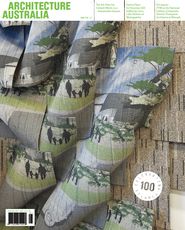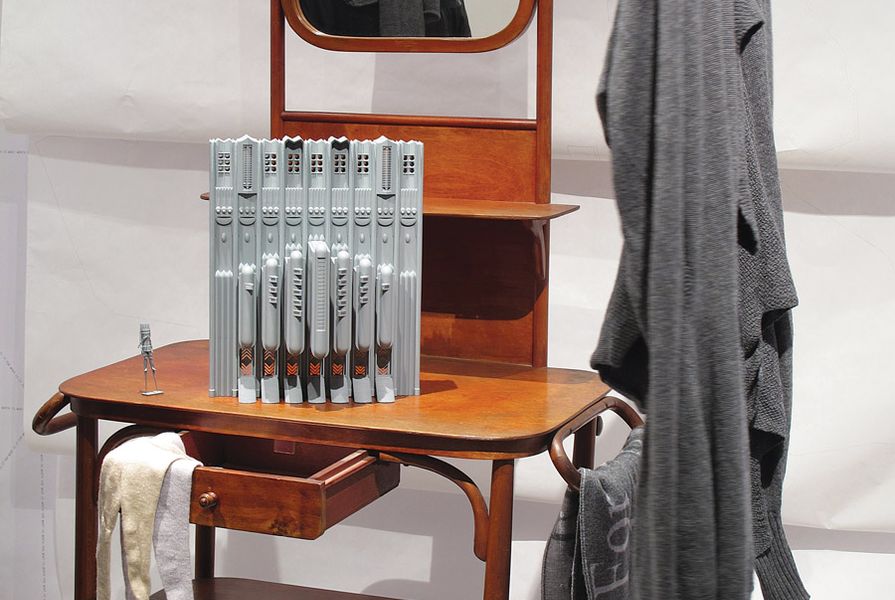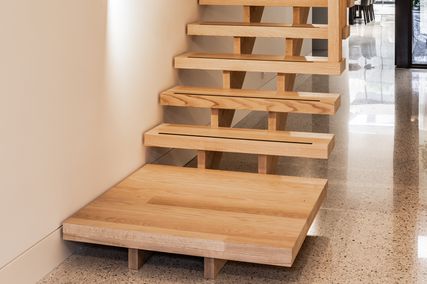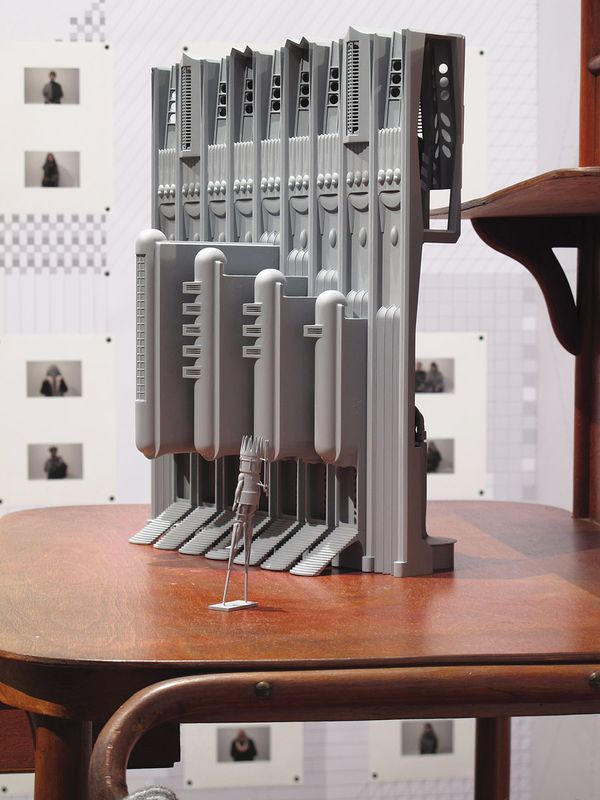There are a number of old black-and-white photographs of Freud’s study, a sombre and lush room decorously crammed with collections of artefacts, many of which were exotic and religious, or mythical in nature, which have caught my attention of late. In the midst of the psychoanalyst’s inner sanctum and the rich oriental rugs that lined it, two objects in particular stood out: the gathering of statuettes on his desktop and a plaster cast of Gradiva, the purported tenth muse, mounted beside the fireplace. For what it’s worth, I mentally carried these relics to this exhibition by Ricarda Bigolin and Michael Spooner, or perhaps it was there that they first came into focus.
For What It’s Worth playfully takes its name from Charles Frederick Worth (a subject in part of Bigolin’s research), the designer who transformed dressmaking into the art of haute couture, founding the fashion system as it functions today. As his collections grew and his renown burgeoned, his notoriety was reflected in continuous architectural additions to his estate. This title, a rhetorical statement, “for what it’s worth,” exists as an insouciant gesture of sorts, suggestive of the fact that it does not necessarily invite or require a response. Or perhaps it exists as a dare to react, to initiate a confrontation, face to face, so to speak, which conceivably calls into question issues pertaining to value and, indeed, to its measures, revealed in an exchange between architecture and fashion.
An effigy of Howard Raggatt on top of glass stilts stands before a 3D resin section of Spooner’s The Swimming Pool Library.
Image: Peta Carlin
Established as a dressing room, with suggestions of a theatrical stage, this other internal chamber explored transferences and projections between the building and the body – anthropomorphic and bestial, not as a collaboration per se, but rather as separate confessions coerced – that revealed a shared working toward similar ends, the so-called “elephant in the room” that exists between fashion and architecture, manifest in the tangibility of the surface and the necessity of dressing.
The exhibition springs from Spooner’s The Swimming Pool Library (2009), another in the series of architectural narratives also known as A Clinic for the Exhausted. Here, a chapel and a dry dock were assembled amid a surreal landscape, their virtuosic crystallization the result of a reading of a self-charted atlas, Spooner navigating a shifting sea of references (Hollinghurst’s eponymous novel, Minton’s Loch Ard Peacock and Paul Scheerbart’s The Gray Cloth, to name only a few). Hoisted high in one of the towers, a pink elephant hovered, rendered grey – the latest figure in Spooner’s menagerie, the subject of For What It’s Worth‘s topical metamorphosis. An effigy of Howard Raggatt also featured, attired in a circleted diving suit, assuming an elevated prospect, aided by the addition of glass stilts. Raggatt’s cameo performance, Spooner has revealed, was the result of a drunken eulogy Raggatt once eloquently penned to Peter Corrigan, in which Building 8, RMIT, was viewed and sent off as an ocean liner.
A 1920s Thonet dresser hosted an array of objects – a model, a figure, a draping elephant costume – at For What It’s Worth.
Image: Peta Carlin
For What It’s Worth contains an effigy of “Drunk Howard” and a section of The Swimming Pool Library, 3D-printed in resin, the minute and glorious detail of Spooner’s drawings here translated into diminutive architectural and human form, the building an almost motor-like edifice, grey, with Griffin-esque overtones. Raggatt’s costume in this outing recalls Eugène-Emmanuel Viollet-le-Duc’s drawings of medieval armoured knights and his figuring in this form is right at home on Freud’s desk. Both model and figurine were pedestalled on a 1920s Thonet dresser, itself elevated on a minimal base, curtained by the hide of the elephant’s body, its tusks like socks, hanging out from the drawer; a titled blanket, like a monogrammed towel, hung on a side rail; the headpiece, reminiscent of a hunting trophy, mounted on a side wall.
This collaboration, as Spooner’s elegantly designed catalogue reveals, takes Ovid’s tale of star-crossed lovers Pyramus and Thisbe as a trope, their affection, despite the impenetrability of their forced divide, experienced through the interface of a wall, a surface common to both, their ardent and furtive communication taking place through the smallest of openings. The elephant rendered as a series of surfaces, through a number of unfoldings, was translated onto yet another surface, the pattern paper of fashion designers, a remnant of potential toile, here deployed as a cascading scrim.
A draping elephant costume embodied the exchange between digital model and seamless knitted 3D prototype.
Image: Antuong Nguyen
Bigolin did not cut the fabric to measure, but rather, assisted by a technician, pieced together digitally the surface to fit, stitch by stitch, the hand no longer touching the fabric but fingering the keyboard, the sound of needles no longer heard clacking but rather digits tapping, the machine in another room “printing” outputs in a continuous chain. Middle grey and ivory, and composed of a number of stitch forms, these fine woollen garments of varying densities drape beautifully on the body or any other hanger, a diagram of the dry leather hide of an elephant transformed into sumptuous wraps – the headpiece placed over the head of a person taking on spectral qualities in the gaping difference of this other fit, the pulling of the ears outwards a revelation of the source, the tusks now detached and malleable, a delightfully variable accessory.
At the opening and during the course of the exhibition, Bigolin gave visitors the opportunity to try the outfit on for size, to masquerade in the guise of the elephant, encouraging them to compose the pieces and to determine their own elephantine ruse, playing dress-ups and posing for the camera. These images were then printed and pinned to the wall, accompanying a series of her own portraits in varying poses of make-believe and masked habille – a small album of other surfaces, mementos of the space and garment both inhabited.
Gradiva, it is said, was the adopted muse of the surrealists and operated on both sides of the wall. In her flowing robes she was able to breach the divide, walking through it, moving seamlessly between the worlds of dreams and waking reality. Like Gradiva, Bigolin and Spooner have been able to traverse the partition between fashion and architecture only because they know how to dress and recognize the value of ludic interplay.
That’s my two bob – for what it’s worth.
Source

Discussion
Published online: 1 Jan 2011
Words:
Peta Carlin
Images:
Antuong Nguyen,
Peta Carlin
Issue
Architecture Australia, January 2011





















